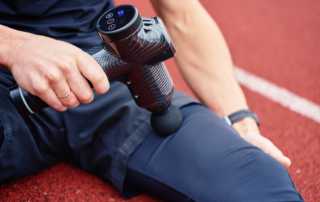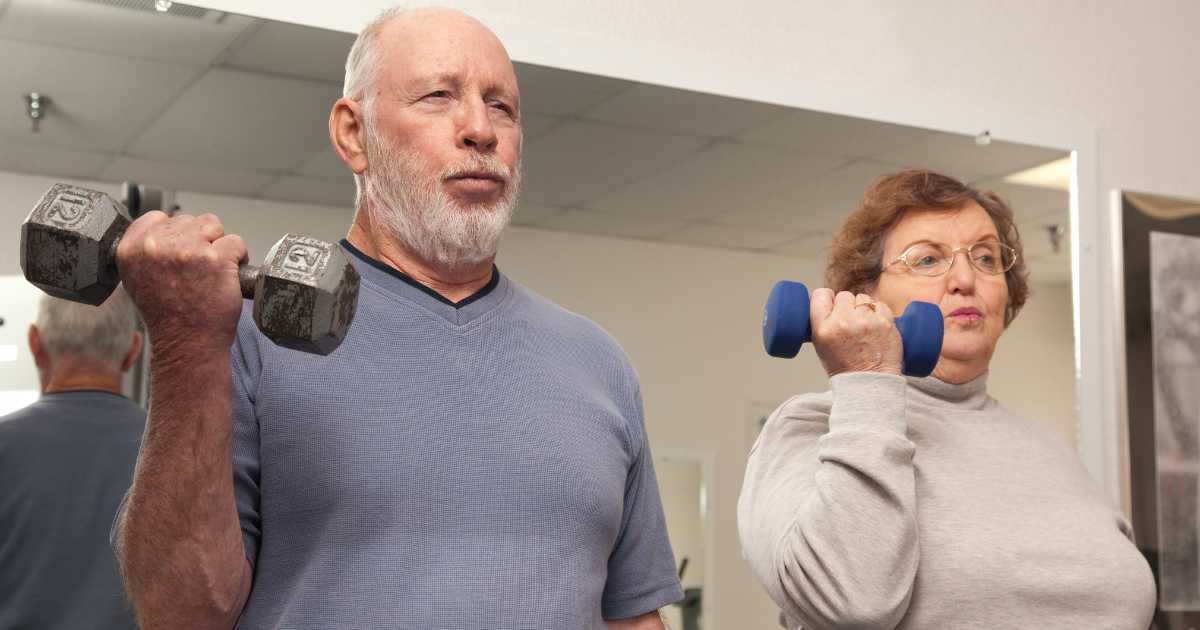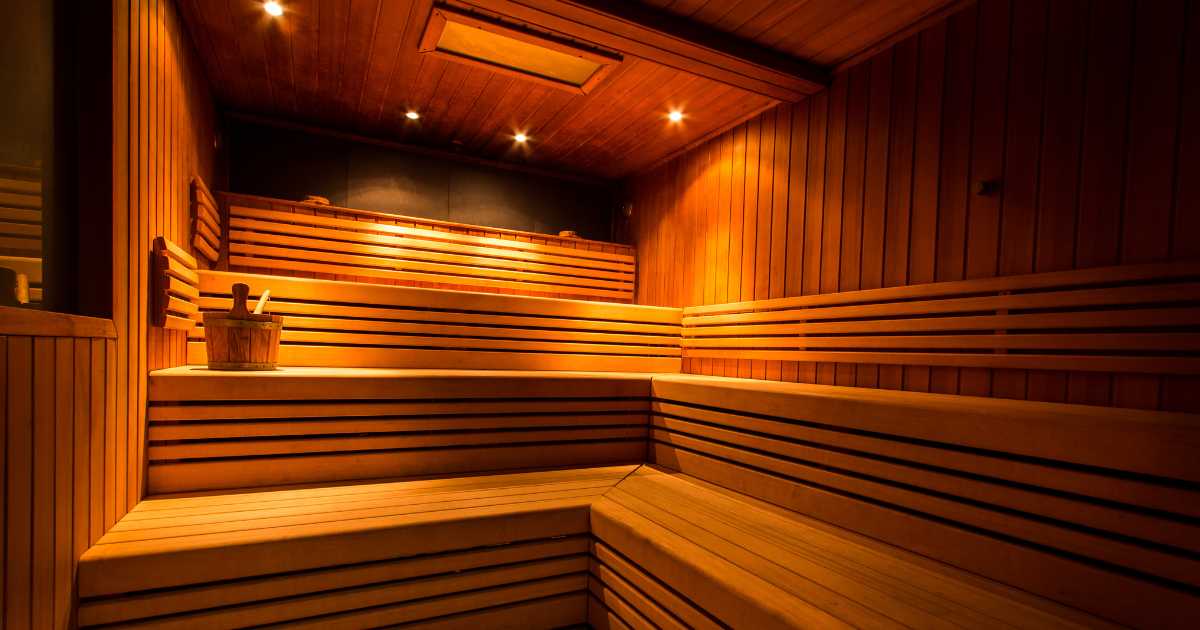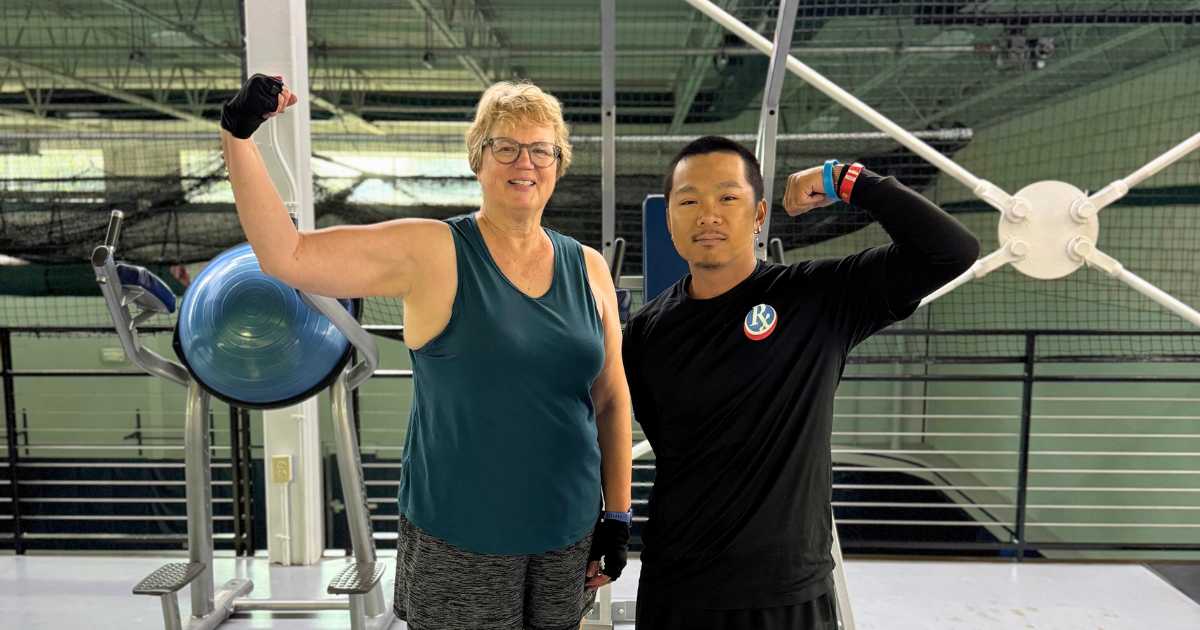There’s no one-size-fits-all solution for aging well. But when we zoom out and look at the body as a whole system — not just parts — we start to see a much clearer, more hopeful picture.
Muscle loss (sarcopenia), hormone changes, inflammation, energy, pain, and even mood are all connected. And the deeper truth? They don’t just happen to us as we age — they respond to how we move, rest, eat, and regulate our stress.
Let’s pull together the pieces we’ve been unpacking these past few months.
1. Sarcopenia: The Starting Line, Not the End Point
After age 30, most people lose 3–8% of muscle mass per decade. After 60, that process speeds up — especially if we’re inactive.
Sarcopenia doesn’t just affect strength. It impacts:
- Balance and proprioception (increased fall risk)
- Metabolism and blood sugar regulation
- Joint health and posture
- Every day confidence and independence
The good news? Strength training is the #1 antidote.
Muscle is responsive at every age, especially when we include:
- Progressive resistance training (adding challenge over time)
- Intentional recovery
- Mind-body connection (to activate and coordinate muscles properly)
2. Hormones: The Hidden Influence Behind Energy, Fatigue & Muscle Gain
In our 50s and 60s, both men and women experience hormonal changes that affect:
- Muscle-building ability
- Energy and mood
- Sleep quality
- Bone density
- Fat distribution
Women experience a steep estrogen drop post-menopause, affecting joint lubrication, tendon elasticity, and metabolism. Men may experience a gradual testosterone decline.
But here’s the twist: Movement improves hormonal balance.
✔️ Strength training increases testosterone and growth hormone
✔️ Walking, stretching, and breathwork reduce cortisol
✔️ Restorative practices (like MELT or sauna) support hormone-sensitive tissues and stress recovery
It’s not about “fixing” your hormones. It’s about training in harmony with your biology.
3. Lymph: Your Internal Clean-Up Crew
Think of your lymph system as your body’s natural detox team. But it only works if you move your body.
Stagnant lymph flow =
- Chronic inflammation
- Heaviness and joint stiffness
- Sluggish energy and immune function
Daily movement, hydration, self-massage (like MELT), and even bouncing/light cardio all support this system. It’s the low-key, high-impact secret to recovery and vitality.

4. The Nervous System: Where It All Begins
You can eat well, stretch daily, and train hard… but if your nervous system is stuck in “fight or flight,” your body won’t adapt or heal efficiently.
Chronic stress tightens your fascia, taxes your hormones, slows muscle recovery, and even drains lymph flow.
You have to teach your body to feel safe again.
That’s why nervous system practices — like breathwork, floor transitions, proprioception drills, and low-impact mobility — are more than “add-ons.” They’re foundational.
The Missing Link: How It All Connects
Here’s what we know:
- If your nervous system is overstressed, it blocks muscle development and slows recovery.
- If your lymph system is stagnant, inflammation rises, affecting joints, energy, and hormone balance.
- If your hormones are dysregulated, you struggle to build muscle and feel motivated.
- If you’re losing muscle, you lose your foundation for movement, strength, and metabolism.
It’s all one loop. And the key to breaking it?
Smart, intentional movement that honors the whole body.
What This Looks Like in Real Life:
Here’s a week of smart, functional training that supports all four systems:
Day 1: Strength Training + Floor Practice
- Lower body strength (leg press, RDLs)
- Practice getting up/down from the floor 3–5 times
- Finish with 2 mins breathwork
Day 2: Cardio + Lymph Support
- 30-minute walk or pool cardio
- Gentle bouncing or dynamic stretching
- Leg elevation post-workout
Day 3: MELT + Mobility
- Calves, hips, shoulders MELT session
- Foam roller breath reset
- Joint circles and floor mobility
Day 4: Upper Body Strength + Balance Work
- Rows, overhead press, core work
- Single-leg balance or side-step drills
- Finish with deep nasal breathing
Day 5–6: Active Recovery
- Nature walk, bike ride, tai chi or light movement
- Hydrate + nourish well
- Optional sauna, breathwork, or restorative yoga
Final Thoughts: The Journey Is the Win
Aging is not a downhill slope — it’s an invitation to evolve how we care for our bodies.
You don’t need to overhaul your life. You just need to shift how you approach it:
- Focus on building and maintaining muscle
- Support your recovery systems
- Prioritize nervous system regulation
- Stay curious and connected to how your body moves
You’re not “past your prime.” You’re just stepping into a wiser phase — one that deserves strength, support, and smarter tools.
If you’d like help tailoring your routine to support these systems, ask your trainer or book a free consult with us.
You’ve got more control over how you age than you think — and we’re here to help you claim it.
By Cierra Bloom | Master Trainer – Prescription Fitness

Click on a Subject to Learn More





